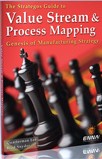|
Workcells and Cellular Manufacturing are at the heart of Lean Manufacturing. Their benefits
are many and varied. They increase productivity and quality. Cells simplify material flow,
management and even accounting systems.
Workcells appear simple. But beneath this deceptive simplicity are sophisticated
Socio-Technical Systems. Proper functioning depends on subtle interactions of people and
equipment. Each element must fit with the others in a smoothly functioning, self-regulating and
self-improving operation.
Proper design of manufacturing workcells is an engineering problem. Like any other
engineering design, it proceeds through a logical sequence of steps. At each step, the designers
make compromises between conflicting requirements or technical limitations. Doing it well
requires a deep and profound knowledge of the elements of a workcell, their functions, and their
interactions.
|
|



Buy Book
Facilities & Workplace Design
Quarterman Lee, Arild Amundsen, William Nelson & Herbert Tuttle


|
The links below take you to the detail steps of cell design. An
experienced designer performs many of these steps informally or just mentally. The process is
not as complex or lengthy as the charts indicate. However, failure to perform a step results in
design by accident, a risky proposition.
You can find a complete explanation of this in Mr. Lee's book, "Facilities and Workplace
Design - An Illustrated Guide."

|





